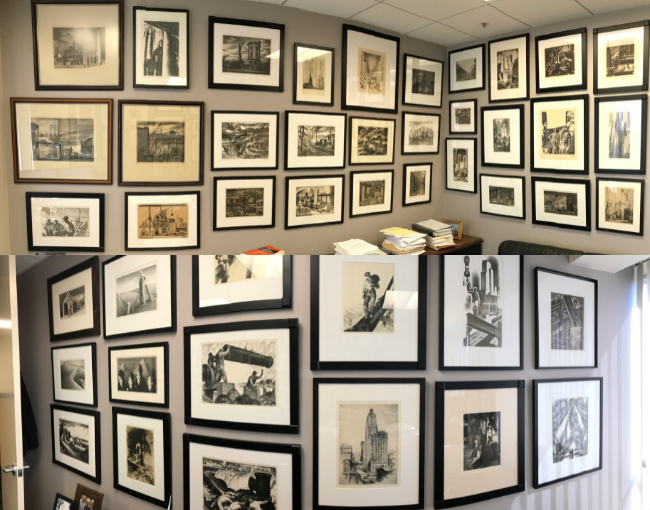Home > News & Events > From Office Gallery to Ivy League: Rich Reinis' Print Collection Finds Home at Princeton

From Office Gallery to Ivy League: Rich Reinis' Print Collection Finds Home at Princeton
March 7, 2024
Rich Reinis’ office was once a museum of sorts. His huge collection of framed prints papered the walls of his Los Angeles workspace, their evocative black-and-white imagery depicting various aspects of 20th century America.
“It was always a kick for me to show off these prints; it made a social statement of sorts,” recalled Rich, a partner in Thompson Coburn’s Business Litigation group.
But when the firm moved offices in 2021, he packed up the collection, storing a number of works at home under his bed for a time.
Today, those works have been brought back into the light and are being used to educate students at Princeton University. Over the past two years, Rich has donated his collection to his alma mater, and he is now lined up to speak to other alumni this month about the works and decision to gift them.
Rich attended Princeton and played football there, but he was no art major and took a single painting class. He acknowledges, though, that the first seeds of his interest in art probably began during that time. Over the years, he realized that the style of art produced by Edward Hopper, Martin Lewis, and others spoke to him. He decided to begin a collection.
As it turned out, his taste was relatively affordable. He was able to pick up many of the prints for as little as $500 to $1,000, and many are small in size. “This was within my budget,” he said. The most he paid for a work was around $7,000.
 But their value grew over the years. By the time he decided to try to donate the collection and got an appraisal, he said, “the end result was a number that got my wife looking at me like ‘I didn’t know we had this much money under
our bed.’ ” Ultimately, though, Rich wanted to keep the collection together and have it displayed for educational use, rather than sell it in pieces.
But their value grew over the years. By the time he decided to try to donate the collection and got an appraisal, he said, “the end result was a number that got my wife looking at me like ‘I didn’t know we had this much money under
our bed.’ ” Ultimately, though, Rich wanted to keep the collection together and have it displayed for educational use, rather than sell it in pieces.
He contacted a number of other museums before landing on the Princeton opportunity. The university has a new museum under construction and was interested in the collection for educational purposes. The prints include works by Rich’s favorite artist, Martin Lewis, as well as Thomas Hart Benton, Grant Wood, Earl Horter and many others. “There is historical value in the works that probably exceeds the photographic evidence of what took place during the Depression,” Rich said.
In addition to the nearly 150 prints, there are also a few original pieces in the collection. Those include an oil and charcoal work by Howard Chandler Christy and five drawings by Lewis.
Rich’s speech to the Princeton alumni group on March 13 won’t focus so much on the art itself. Although he appreciates the works, he said, he’s not an expert from a fine arts perspective. Rather, he will speak about his story of building the collection and what it means to him to be able to share it now with a new audience.
